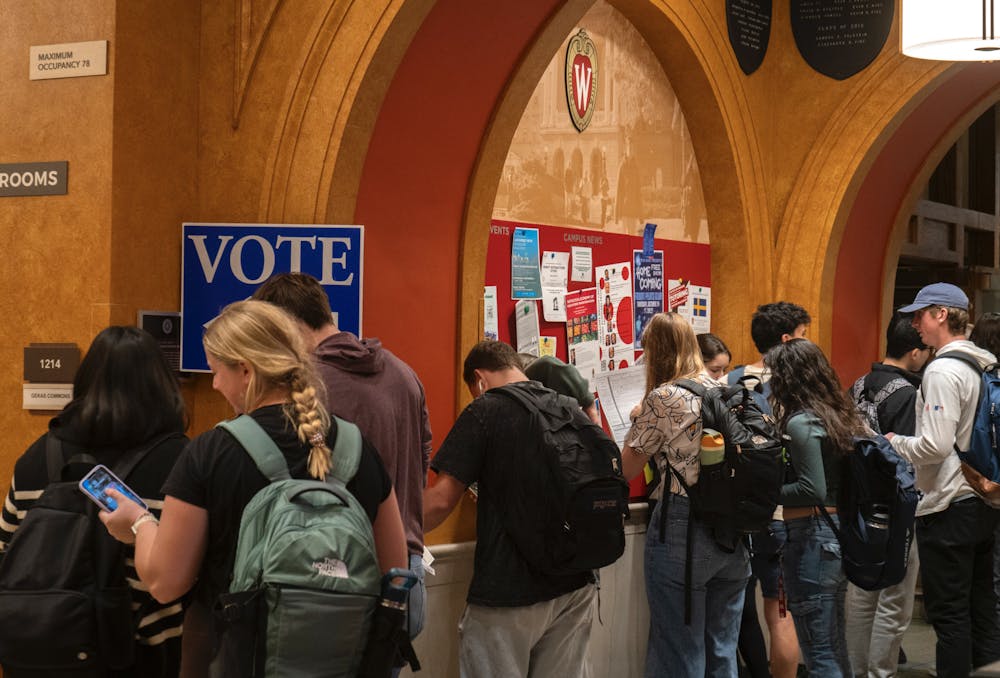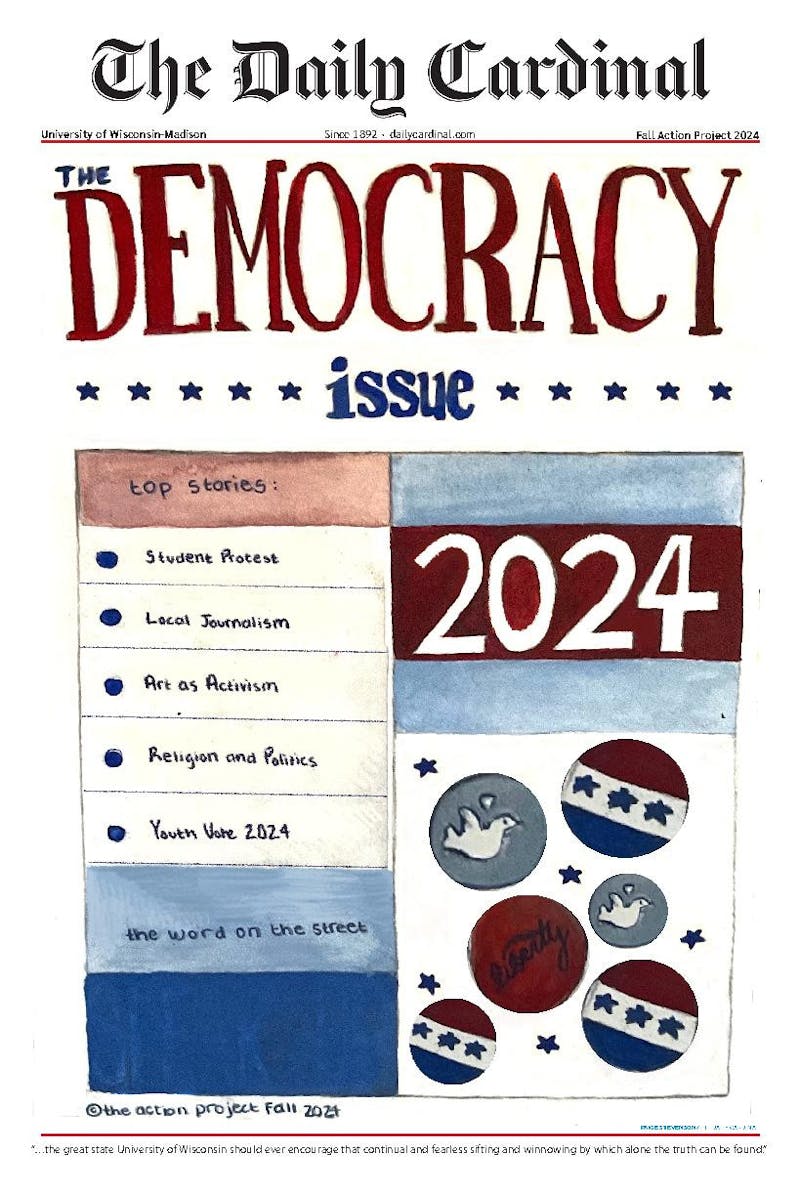While political polarization worsens throughout the nation, so do the sources that inform communities on local, state and national news.
As many local news publications disappear, residents across the state are forced to fill in news gaps on their own. In Oconto County, many residents consume their news via social media — a slippery slope considering many platforms do not regulate political messaging and often portray biased algorithms depending on the individual.
The Oconto County Times Herald, Shawano Herald and Wittenberg Enterprise & Birnamwood News — all part of the NEW Media Inc. umbrella — are the main source of written news for many Wisconsinites in Oconto and Shawano County. Despite the coverage, the counties are still two of many across the state that experts would consider news deserts.
News deserts are communities, either rural or urban, with “limited access to the sort of credible and comprehensive news and information that feeds democracy at the grassroots level,” according to the University of North Carolina-Chapel Hill’s Hussman School of Journalism and Media.
Over half of U.S. counties have “limited access” to reliable local news and information, and 7% are at “substantial risk” to lose local news, a study at the Medill School of Journalism, Media, Integrated Marketing Communications at Northwestern University found.
But although the papers don’t have the staffing they once did, Kevin Passon, editor-in-chief of the three NEW Media Inc. newspapers, does not think all of Oconto County is a news desert.
“I think it’s probably fair to say there are different parts of the county that are more of a news desert than others,” Passon said.
With an editorial staff of three people, the papers, which each release a weekly 24-page issue, are able to cover a plethora of local news including the city council, school and county boards, feature stories and more, Passon said.
The spread of misinformation
The danger of news deserts mainly lie in their ability to facilitate the spread of misinformation. When local newspapers close, pink-slime news sources — usually right-leaning news sites that publish “one-sided content” — fill in the news gap and mislead voters, according to a KPBS report.
“They may buy a newspaper and use that trust very maliciously to start to pretend to report, but actually have a vested interest in the kind of news that you are and aren't giving a community,” Sophie Culpepper, a local news journalist at Nieman Journalism Lab at Harvard University, told The Daily Cardinal.
When people start receiving most of their news from social media, including Facebook and Nextdoor, they become much more vulnerable to misinformation and political polarization, a Brennan Center for Justice study found. In Oconto, social media is a main source of news for many.
“I think that’s how it is for most people here,” an Oconto Falls business owner — the second largest city in Oconto — told the Cardinal. “Not many people read the Oconto County Times Herald.”
In Oconto and Shawano County, where the combined digital and print circulation of the three papers is over 15,000, Passon thinks people look forward to reading the paper.
“Anytime that [we have a problem] we'll hear about it,,” Passon said. “So people are reading the paper.”
But with 45% of Americans having “very little”confidence in newspapers, according to a recent Gallup poll, accuracy and trust from locals is more important than ever. Lack of trust in news is not new, with a constant decrease since the turn of the century. Passon thinks distrust stems from a lack of trust in the media as a whole and is not directed at the local paper.
“That's a general, ‘don't trust the media,’ not, ‘don't trust the Shawano leader,’” Passon said. “Otherwise, I think most people do [trust us].”
Local news facilitates civic engagement and voter turnout
As newspapers disappear and get bought out and cut down by larger companies like Gannett at an average of 2.5 a week, according to Medill, local communities are forced to get their news from outsiders.
“It's hard to cover a community if you're not in the community,” Passon said. “It's hard to get a real feel for what the community is open to in any particular instance.”
A decrease in local news circulation are correlated with decreased voter turnout and overall civic engagement, research from the University of Nebraska-Lincoln found. This insight rings true with Oconto County where there are [insert number of newspapers] in total, compared to Dane County which has a media ecosystem of about 22 newspapers.
In the 2020 federal election, only 76% of eligible voters in Oconto County cast ballots, and in the 2022 midterms, only 63% cast their vote, compared to 89.3% and 80.4% respectively in Dane County. A similar pattern emerged in the recent August primary, where 32% of eligible voters in Oconto participated versus 45.3% in Dane.
“People who read more local news tend to feel more connected to their communities,” Culpepper said. “There’s strong evidence that local news is a form of community fabric.”
Those with more education tend to be more interested in politics, think their vote will make more of a difference and know how to access voting, Dr. Michael Wagner, director of the Center for Communication and Civic Renewal at the University of Wisconsin-Madison told the Cardinal. People with a higher economic status also have an easier time navigating the process to register, and political leaders focus more attention on those with a higher socioeconomic status, he said.
In Oconto and Shawano, covering local elections is highly dependent on if the race is contested, Passon said. If the race is uncontested, the papers will only name the candidate that is running rather than conduct an interview.
“There’s just not a reason for us to expend our resources for those uncontested races,” Passon said.
For larger local elections, the Times Herald will reach out to candidates for a one-on-one interview, only if the candidate represents a larger constituency in the area, Passon said. The paper does not put out voter guides for state or federal elections.
“It’s really just those local races that we put information out in,” Passon said.
And politics in Oconto and Shawano County are contentious, with the potential to harm relationships, Passon said.
“Everything is fine until politics comes into the picture, and then it becomes a very distinct ‘us against them’ attitude for things,” Passon said.
News creates community connection
But local news is still what “binds” people together, Culpepper told the Cardinal.
“There is a strong correlation between how connected people feel to their communities and how engaged they are with local news,” Culpepper said. “Not having the information you need to be an informed citizen is a kind of disenfranchisement.”
Until people are adequately informed about a topic, there’s no way to solve it, a problem which boils down to both philanthropic and political issues, Culpepper said.
“When people lose access to local news and replace those sources with more ideological news,” Dr. Michael Wagner, the Director of the Center for Communication and Civic Renewal said “They miss out on important information from both sides.”
Tomer Ronen is the Features Editor for the Daily Cardinal. He has written in-depth for sports and has covered protests, state politics, breaking and campus news. Follow him on Twitter at @TRonen22.






